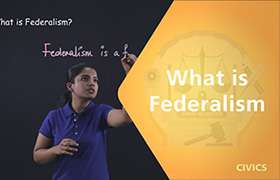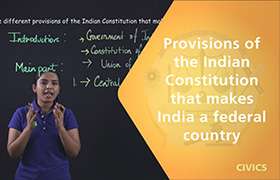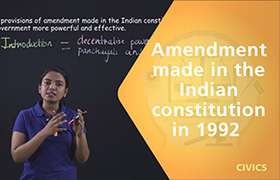CBSE Class 10 Answered
Please answer the following questions in suitable points from:
Chapter-2 (Civics)
Federalism
1. What is ‘Federalism’? Write its important features?
2. Mention the different kinds of routes through which ‘Federalism’ have been practiced?
3. Mention the different provisions of Indian constitution which makes India a federal country?
4. What do you understand by ‘Residuary Subjects’?
Give examples.
5. How is federalism practiced in India?
6. What do you understand by ‘Coalition Government’?
7. How did ‘Coalition Government’ lead to a new culture of power sharing? Or, How power is shared in a coalition form of government?
8. What do you understand by Decentralisation? What method was adopted by India to make Decentralisation?
9. What are the steps taken by the constitutional amendments of 1992 to make local self-government more powerful and effective?
10. How does local self-government work in rural areas as well as in urban areas?
11. What are the merits of local self-government?
12. What are the difficulties faced by local self-government?
13. How did India emerge as a federal nation?
14. How is a federal system different from a unitary form of government? Give examples of vertical power sharing from the Indian situation?
15. Explain any five features of the third tier of the government.
16. Why do some states enjoy special powers in India? Which are they?
17. What type of federation does India have? How it is different from that of USA?
18. How legislative powers being distributed among three tiers of the government by the constitution?
- In a federal structure of government, there are two or more levels or tiers of government.
- The different tires of the government govern the same citizens. However, each tier has its own jurisdiction in specific matters of legislation, taxation and administration.
- The Constitution of the country specifies the respective jurisdictions of the different tiers of government. Therefore, the existence and authority of each tier gets constitutionally guaranteed.
Kindly ask the rest of the questions as separate queries.







